Fieldlogy Science: A new transdisciplinary science for Earth’s regeneration
Fieldlogy, a new transdisciplinary science for the biosphere and geosphere, draws on ecological, environmental, and economic fields. The approach incorporates mutual interactions, cause-and-effect sequences, feedback systems, self-organising, fusion systems, and multiplicity. It aims to enhance natural capital through the application of Nature-based Solutions (NbS) rather than Industrial Technology-based Solutions (ITbS). ITbS cannot regenerate Earth’s systems due their huge cost and increasing entropy, compared to NbS. In contrast, Fieldlogy offers a framework and action plan for Earth’s regeneration, where plants, and especially forests, play a key role.
The Earth’s system faces major and unprecedented crises including global warming, climate change, and planetary–boundary issues, which have been occurring incidentally during the 20th and 21st centuries (Anthropocene period). In recent decades, the world, particularly the Global North, has proposed Industrial Technology-based Solutions (ITbS) to address mainly renewable energy for climate and environmental issues. However, most of these approaches are at best expensive and ineffective, and at worst actively intensify the situation (such as solar panel construction rather than planting trees or cultivating forests). At Hokkaido University, Professors Mitsuru Osaki and his colleagues Tsuyoshi Kato, Nobuyuki Tsuji, Niken Andika Putri, and Silsigia Sisva, are developing new approaches based on natural capital (the assets provided by natural systems), among which plants, and especially forests, play a key role.
Their approach – based on Nature-based Solutions (NbS) – is for Earth’s systems to be regenerated and become self-sustaining through a process of homeostasis (5). As the main contributing player, trees and forests perform many critical services, largely due to leaf function, which convert carbon dioxide (CO2) to energy compounds (carbohydrates) using solar energy (5). Leaves possess four functions: firstly, CO2 removal from air; second, the conversion of solar energy stock into carbohydrate; third, green spectrum refraction (ie, excess energy scattering into space); and finally, air temperature cooling via latent heat removal through evapotranspiration (via porous structures called stomata on the leaf surface). As such, plant leaves can be defined as a transdisciplinary biotic apparatus. Equivalent services within an ITbS approach include carbon capture and storage (CCS) technology, solar panel and batteries, and air-conditioning – all of which have seriously ecological, environmental- and economic negative-impacts (5).
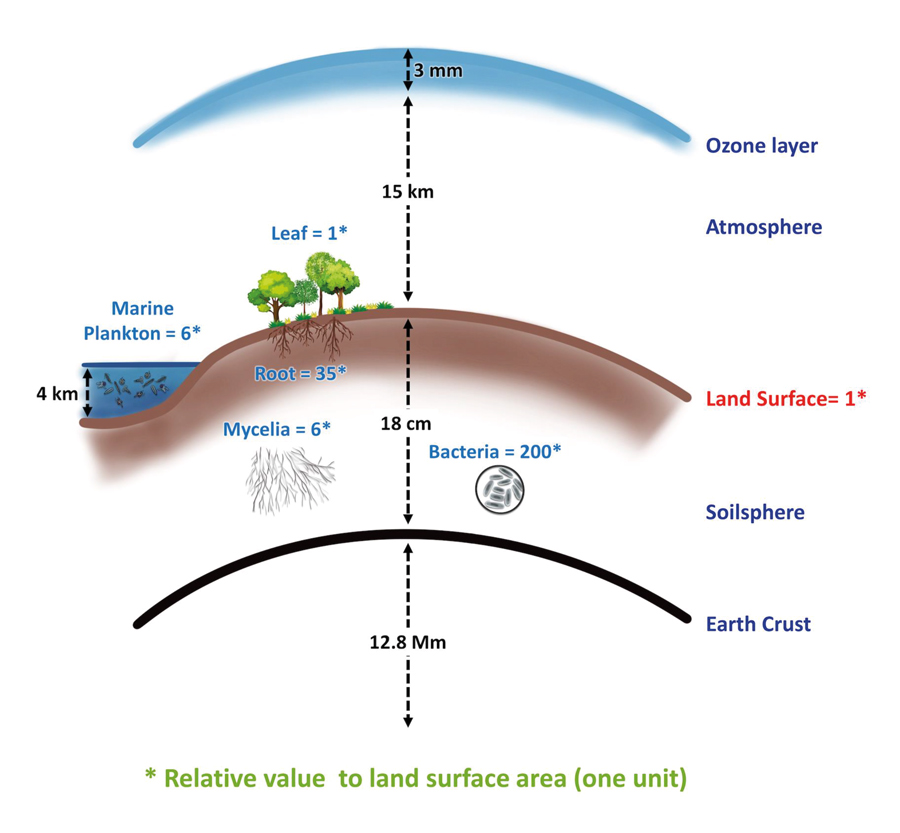
Plants also absorb water and nutrients through their roots, processes that are regulated by leaf function. For example, the water-pump function of the stomata by solar energy and carbohydrate application drive root functions and interactions with the rhizosphere (10 μm around the roots) with microorganisms [Figure 2]. What’s more, a forest containing many trees has larger-scale transdisciplinary functions. These include interconnections among ecosystems, modulating the water–carbon cycle, soil fertility, land protection, and biodiversity conservation within both the biosphere and geosphere. In summary, plants are the basis of solar energy, CO2, water, and nutrient cycles, and form the main currency of natural capital (2−4).
The Earth’s systems must be maintained and regenerated by the transdisciplinary function of forests.Osaki and colleagues argue that the Earth’s System must be maintained and regenerated by the transdisciplinary function of forests (NbS) rather than ITbS (3). To this end, they have developed a new scientific discipline, known as ‘Fieldlogy’, focused on the pivotal transdisciplinary function of forests. Fieldlogy includes teleconnections among ecosystems and connections between the land and atmosphere/ocean, leaf phenology, rhizosphere/soilsphere dynamics, and the quantification of natural capital.
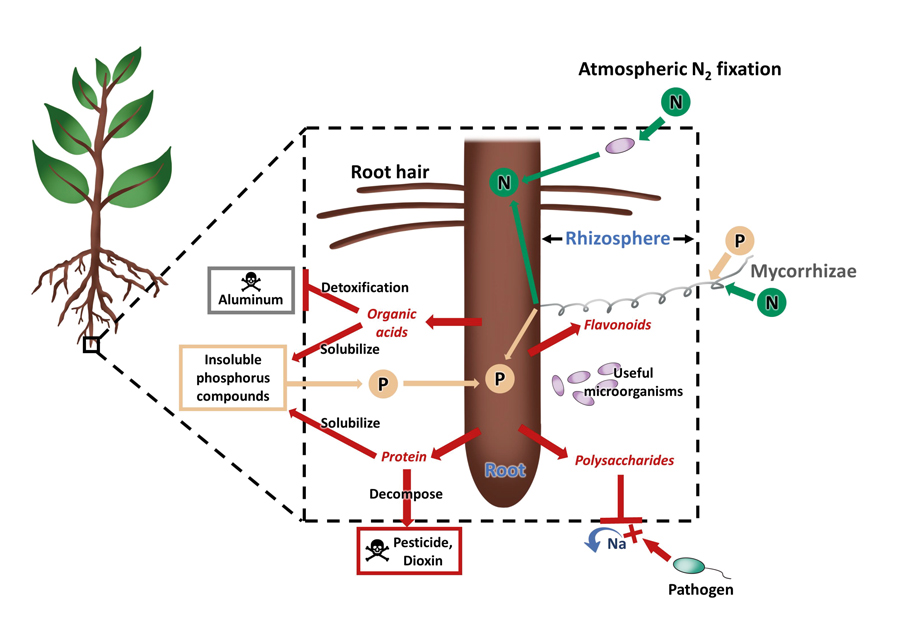
Scientific disciplines come in a variety of flavours (5−7). The ‘traditional’ sciences are single disciplines, each distinct and free-standing (eg, ‘physics’, ‘chemistry’, ‘biology’). Dual-disciplines incorporate aspects of two sub-disciplines (eg, biochemistry), while mulch-disciplines incorporate aspects of more than two sub-disciplines (eg, biogeochemistry). Finally, at the top of the tree sits transdisciplinary science, an approach that not only draws on, but fuses together many other disciplines, taking into account feedback systems, self-organisation, mutual interactions, cause-and-effect sequences, and multiplicity. Osaki and his team have focused their work on the latter approach. Within Fieldlogy, they have developed the concept of the tri-lemma state, in which Earth’s environment, ecology, and resources overlap, forming subcategories that include ecological destruction, environmental pollution, and resource depletion; at the centre is the human dimension. They argue that the solutions of the Global North, mainly ITbS, need to be replaced by those utilised by the Global South, true NbS (tNbS, minimising industrial renewable energy, especially that generated by solar panels, without biomass energy) to address environmental and climate change. They call this approach ‘tri-harmony’ (6).
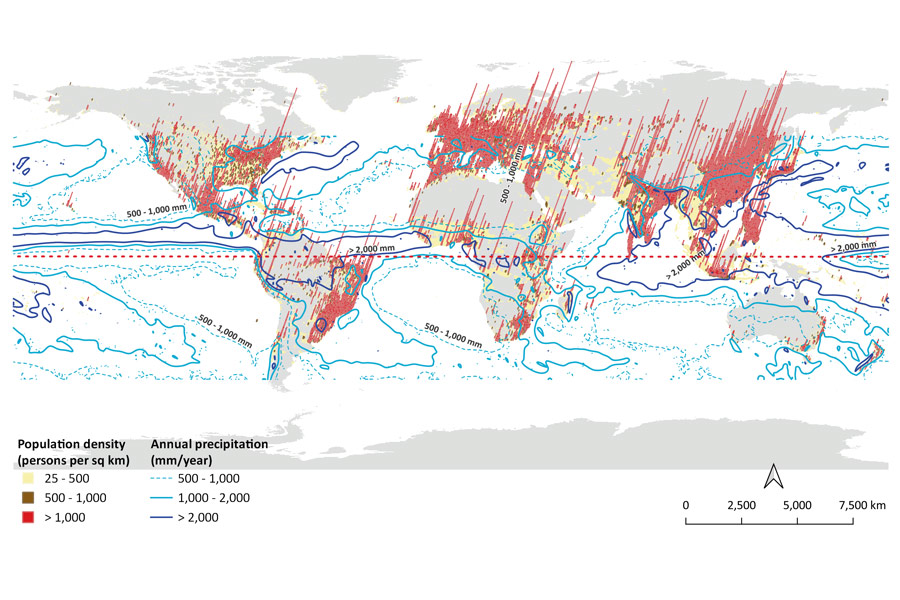
Forests provide a wealth of functions that are critical to human survival, including controlling the flows of energy, carbon, water, and nutrients. Despite this, their value is rarely quantified beyond their potential logging value. No attention is paid to the value provided by carbon sequestration, biomass production (solar energy storage), atmospheric cooling, water storage into soil (run-off protection and flood protection), soil erosion protection, and a range of other functions. To this end, Osaki and his colleagues have developed a method for quantifying the natural capital provided by forests in terms of monetary value (3,4). Application of their technique to a forest area in Malaysia found its worth to be 30 million US dollars, despite having a population of just 315 people. They have also identified the innovated approaches to land management in peatland areas that offer an alternative to current large-scale agricultural practices, which have resulted in widespread degradation, loss of biodiversity, and increases in forest fires (2,7). In their other approaches, tillage operations, chemical fertilizers, and drainage-based irrigation (that is, the removal of water from the ground) are replaced by zero-tillage with grass mulching (Z-tillage culture), organic matters application with biochar and microorganisms under water-storage-based irrigation (AeroHydro culture) (7). The result is that peatlands maintain their health while also increasing the output of economic crops such an oil palm.
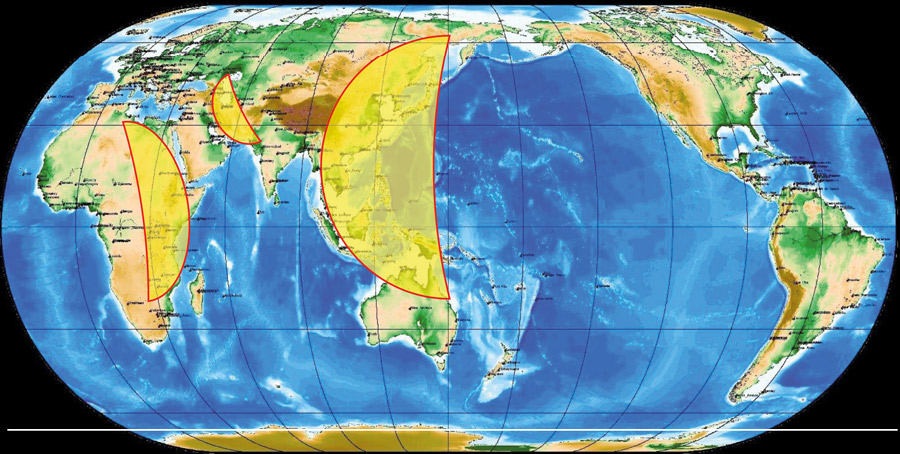
Threats to material exchange metabolisms on land surface
Material exchange occurs between objects and living organisms on a global scale. The material surface is a key marker of this process, with a larger surface area increasing the potential for material exchange. However, a more fractal structure is, in fact, superior. Osaki’s team take the leaf surface as a single unit of the terrestrial land surface; on that basis, plant roots represent approximately 35 area units [Figure 1]. However, as leaves are exponentially more efficient at CO2 sequestration than roots are at nutrient uptake, roots and the soil sphere are major limiting factors for Earth’s metabolism. Moreover, given the very thin layer of soil (around 30 to 50 cm) compared with the Earth’s size, the water and nutrient carrying capacities are very small; however, metabolic activity is very high for regulating Earth metabolisms, indicating metabolic activity in soil sphere is very sensitive and fragile.
On a global scale, human population density is highly correlated with sufficient water availability and soil fertility (1) [Figure 3]. Natural soil fertility is a function of geological processes, including (1) the supply of volcanic ash and lava by volcanic activities (eg, fertile volcanic soils of the Pacific Rim, African Rift Valleys, Ethiopian highlands, Deccan Plateau), (2) soil fertilization by wind borne loess (eg, loess plateau in China), (3) Delta formed in big river mouth by sediment transport along rivers, and (4) differences in fertility due to clay supplied from the crust (eg, fertile plain soils supplied by erosion of nutrient rich rocks in mountainous areas) [Figure 4 and 5]. Protecting the physical, chemical, and biological health of these soils is critical to maintaining rhizosphere function and ensuring that this fragile cog in the global cycle of water, nutrients, and carbon does not become damaged beyond repair [Figure 2].
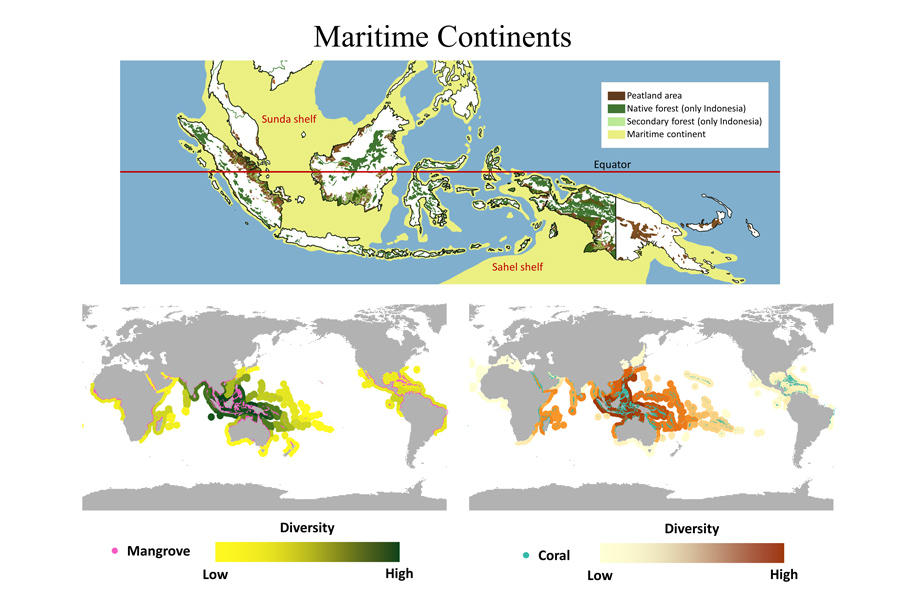
Key eco-zones for Fieldlogy
While forests are found across the surface of the plant, Fieldlogy is strongly focused on certain eco-zones. Most obviously, forest biomass is concentrated in the Tropics where climate conditions are primed for plant growth (eg, abundant water, warm temperatures, fertile soils, and high soil carbon). Moreover, the Tropics contain 76% of Earth’s major river deltas (eg, Nile Delta, Ganges Delta), which are the recipients of nutrient-rich sediments from eroding mountain ranges and volcanic deposits [Figure 4]. Geographical conditions are also conducive to forest growth in the fertile crescents of Asia, Africa, and old Mesopotamia [Figure 5]. Straddling the Tropics, and areas to North, these crescents are areas of nutrient-rich soils derived from river transport and volcanic ash and rocks. Of particular note is the Maritime Continent, which falls within both the Asian fertile crescent and the Tropics (2). This region includes those landmasses and seas between the Indian and Pacific Oceans, including Indonesia, the Malay Peninsula, Borneo Island, Thailand, Vietnam, and the Philippines. This area is particularly noteworthy for the richest biodiversity in peatland forest, mangrove, coral, sea grass, and fish, which support an abundance of biomass and bioproduction [Figure 6].
Teleconnections
First, Fieldlogy considers the large-scale processes (or teleconnections) between ecosystems that influence local conditions: for example, the large-scale biotic pump that drives planetary-scale ‘flying rivers’ that sustain populated areas around the world. Land-based evaporation, responsible for 40% of rainfall, results in low atmospheric pressure on land, which in turn draws moist air from oceans to the land. This moisture is carried along forests across continents, where it joins regional and local water cycles. For example, flying rivers crossing Siberia from Europe to Asia supply 80% of China’s water resources. As such, the implications of deforestation for the biotic pump are far-reaching (2). Another such large-scale process is the link between rivers and marine ecosystems, with rivers flowing thousands of miles across continents suppling nutrients to distant coastal seas (5). Fieldlogy aims to reveal the pathways of these natural resources (such as water, carbon, and nutrients) via isotopic analysis. Moreover, advances in remote sensing have made it possible to monitor the resulting biomass production.
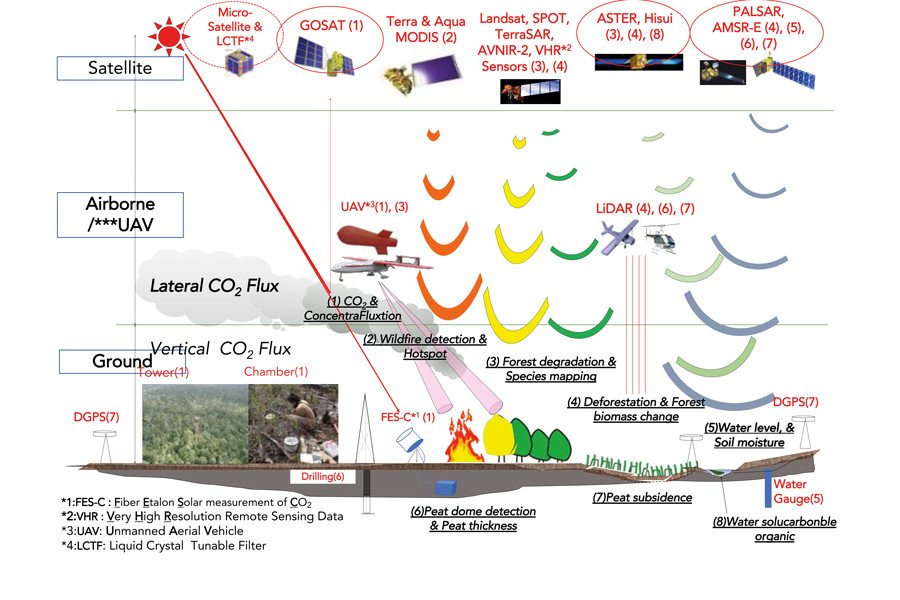
Ecosystem evaluation in Fieldlogy
A critical element of any new scientific discipline is the development of robust systems for evaluation. For Fieldlogy, there are two main approaches. The first is the monitoring of plant phenology (ie, seasonal and environmental changes in plants, and symptom of plant leaf affected by soil conditions; nutrients, water and carbon status, microorganisms’ activity, and soil structure) using informatics based on Earth/Equator Observation Systems (iEOS); that is, using remote sensing tools such as satellites and airborne measurements to support ground-based data collection (2,3). For example, peat subsidence can be measured in ground-based levelling surveys, airborne LiDAR (light detection and ranging), and satellite-based Interferometric synthetic aperture radar (InSAR) [Figure 7]. At the other end of the scale is ‘omics’ analysis (genomics, transcriptomics, proteomics, ionomics) of the soilsphere; that is, the use of advanced analytical techniques (eg, gene sequencing, nuclear magnetic resonance, and liquid chromatography–mass spectrometry) to quantify the chemistry, structure, and genetics of soil components [Figure 8].
Stewardship of natural capital
Last, but certainly not least, Fieldlogy places significant emphasis on the utilisation and stewardship of natural capital, the assets provided by the natural world. Among the most important of these assets are cultivatable land, minerals (nutrients), water, and biomass such as forests (carbon). Such assets are ultimately the basis of all wealth (including oil, gas, solar energy, carbon, water, land, etc); however, while most economic systems have exploited these assets for growth and development, Osaki and his colleagues advocate an approach that can achieve long-term sustainability and Earth regeneration.

One facet of this approach is the differentiation and quantification of carbon stores. The most well-known carbon reservoir (clarified here with colours) is fossil fuels (black carbon); however, other sources and stores include blue carbon (stored in seas and oceans), gold carbon (stored in peat), silver carbon (stored in permafrost), and green carbon (stored in plants and forests) (2). Among those on land, trees have the highest potential for carbon removal from the atmosphere. Therefore, the conservation, rehabilitation, and restoration of forests promote green carbon, and offer the potential for a carbon-negative society.
Osaki and his colleagues have proposed the ‘Land Surface Management (LSM)’ approach to cultivation (2,7). In developing this approach, they studied natural systems in which plants thrive despite challenging conditions (eg, peat/wetland, dryland, saline or acidic soils, extremely poor nutrients soil). Based on their findings, they developed new approaches that mimic natural processes to allow innovated cultivation.
Placing emphasis on the value of natural resources, we have the opportunity to foster a future that can achieve long-term sustainability.AeroHydro Culture: AeroHydro Culture mimics the processes found in water-logged, low-nutrient peat soils. Plants (mainly trees) grow well even in high water levels (most modern techniques are focused on water drainage), because plants develop aerial roots and mound roots (like mangrove roots), of which roots can absorb O2 and N2 (nitrogen fixation), and can decompose natural compost (litter and branch) accumulated in mound roots. Experimental plots have shown that plants adapt, as they do in mangrove and peat areas, to grow aerial roots (for oxygen absorption) and mound roots (for nutrient absorption). The resulting plants are healthier and had greater biomass than those in control plots (2,7).
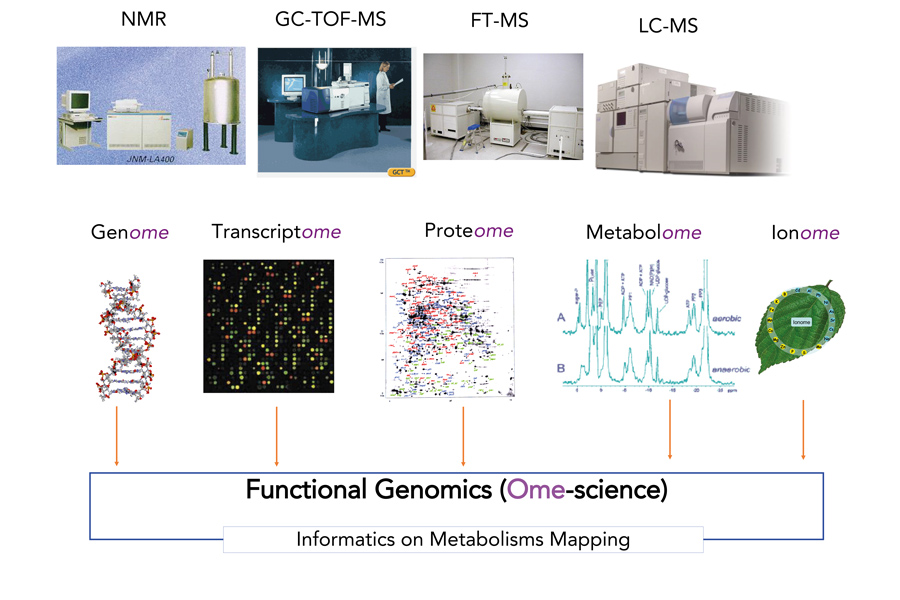
HydroCycle Culture: HydroCycle Culture has been developed for use in dry or semi-arid areas; porous mulch (eg, made from cotton) is laid over the soil to trap moisture and minimise soil heating (7) .
Z-tillage Culture: Osaki and colleagues also propose the readoption of traditional land management practices. One example is zero-tillage with grass mulching (Z-tillage), where soil is not mixed or overturned before seeds are sown. By combining this with the use of natural mulch (eg, spreading grasses on the soil surface), high soil moisture is maintained, then the soil is preserved for generations of plants (7).
Common threads to all these approaches are the harvesting of solar energy to drive cycles of water and nutrients, the use of organic materials (carbon), and the protection of biodiversity. Under the prevailing global economic model, value chains trace the route of a product from its natural source to market (eg, forest to wood product) without assigning an economic value to the reservoir of the natural resource. Moreover, the end consumer has no knowledge of, or link to, the ecosystems from which the product ultimately stemmed (6).
At its heart, Fieldlogy asks us as a society to reconstruct these value chains. Placing emphasis on the value of natural resources, we have an opportunity to foster a future that can achieve long-term sustainability and Earth regeneration.
Personal Response
What role do ‘omics’ technologies play in Fieldlogy?Soilsphere, rhizosphere, and humus on the soil surface are the most important, sensitive, fragile, complex, and interactive of Earth’s metabolisms, and are typical to this transdisciplinary scientific frontier. To understand this frontier, we need to apply the most advanced ‘omics’ technologies: genome, transcriptome, proteome, metabolome, and ionome; such an integrated informatics analysis can provide a metabolic map, of which ‘omics’ is like a technology for studying ‘Earth Metabolisms’ (Physiology). In contrast, remote sensing maps are like a technology to study ‘Earth Diagnosis’ (Phenology). Thus, this ‘omics’ metabolic map will open up the transdisciplinary scientific frontier of Fieldlogy.